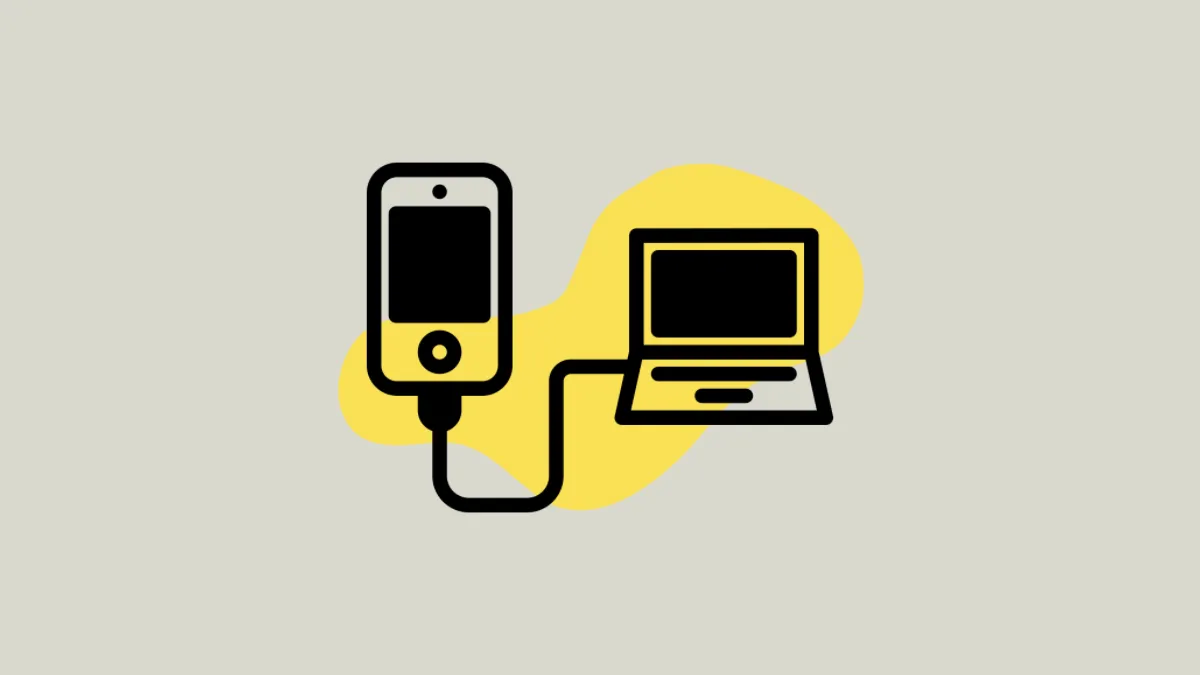Transferring photos from your iPhone to a Windows PC doesn't have to be complicated. While iOS and Windows systems don't offer a native solution like AirDrop for seamless file sharing between Apple devices, there are still several efficient methods to move your photos. Whether you're dealing with a large collection or just a few images, the following techniques will help you transfer your photos quickly and easily.
1. Import Photos Using File Explorer
Step 1: Connect your iPhone to your Windows PC using a compatible cable. If it's your first time connecting the device, you might see a prompt on your iPhone asking for permission to allow the PC to access your photos. Tap on the 'Allow' button to grant access.

Step 2: On your PC desktop, double-click on the 'This PC' icon to open File Explorer. Alternatively, you can press Windows+E on your keyboard to open it directly.
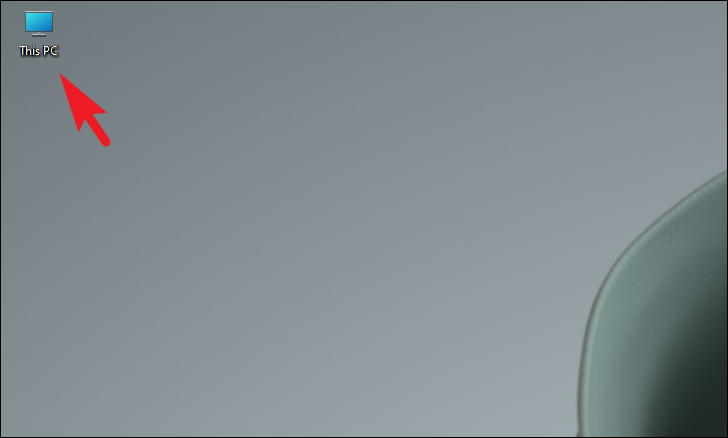
Step 3: In the File Explorer window, locate 'Apple iPhone' under the 'Devices and drives' section. Right-click on it and select 'Import pictures and videos' from the context menu.
Step 4: Windows will search for photos and videos on your iPhone. Once it completes the search, you'll see the number of media items found.
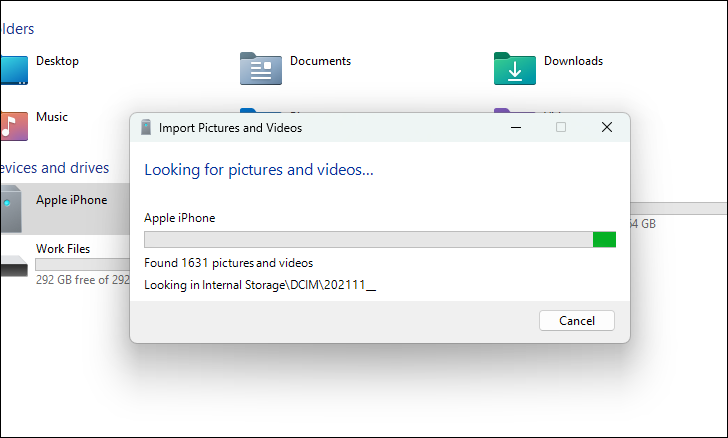
Step 5: You have the option to organize your imports. If you'd like to group your photos by date or other criteria, check the box next to 'Review, organize, and group items to import'. Otherwise, to import all items immediately, click on 'Import' to begin the process.
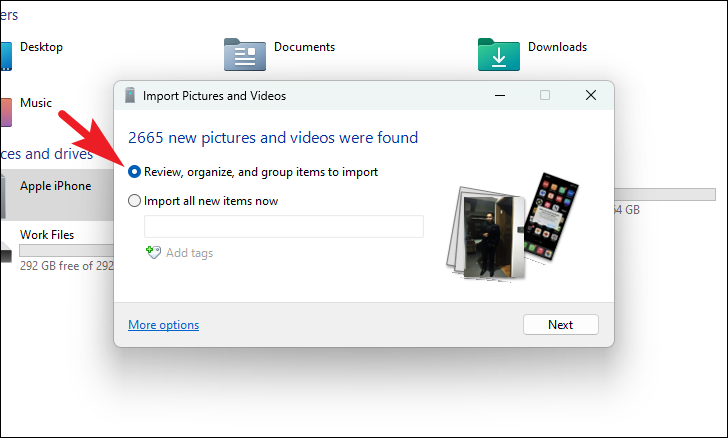
Note: If this isn't your first time importing, Windows will automatically skip photos and videos you've already transferred.
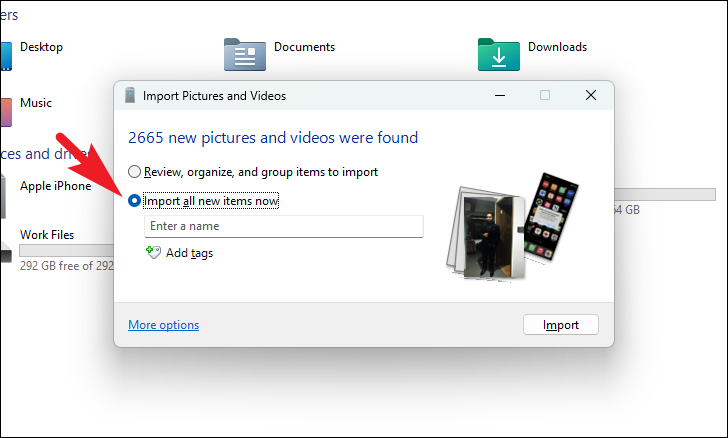
Step 6: If you wish to delete the photos from your iPhone after importing, check the box next to 'Erase after importing' during the import process. This can help free up space on your device.
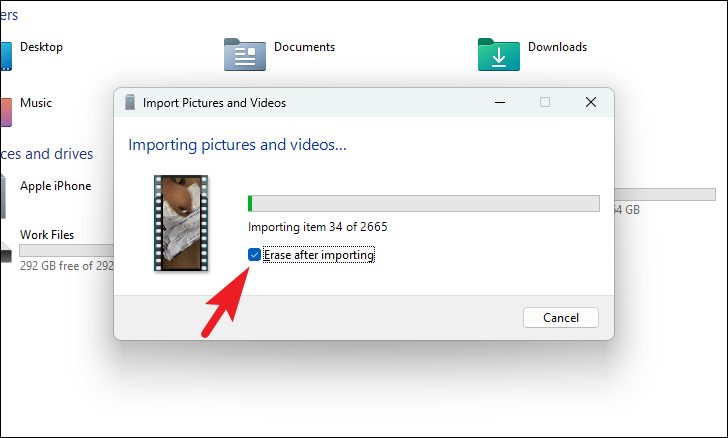
Step 7: After the import is complete, Windows will open the folder where your photos have been saved. By default, they are stored in the 'Pictures' folder, grouped by the import date if you didn't organize them differently.
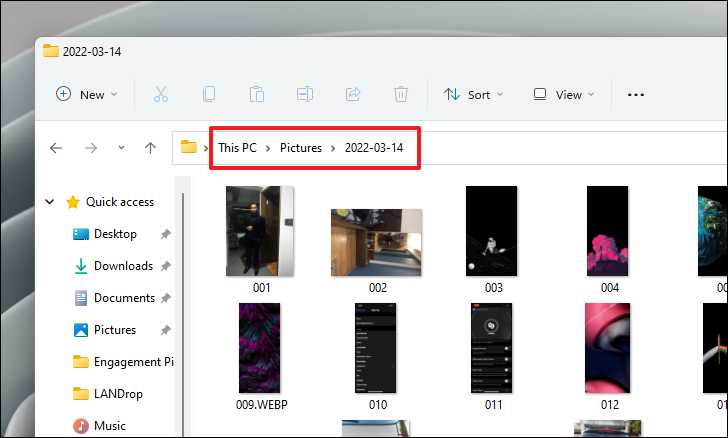
You've now successfully transferred your photos from your iPhone to your Windows PC using File Explorer.
2. Transfer Photos with LANDrop
LANDrop is a free third-party application that allows you to share files between your iPhone and PC over the same Wi-Fi network quickly and securely.
Step 1: On your PC, open your preferred web browser and visit landrop.app/downloads. Click on the 'Try it now' button to download the Windows version of LANDrop.

Step 2: Once the ZIP file is downloaded, navigate to your downloads folder. Right-click on the LANDrop ZIP file and select 'Extract All'. Choose a destination for the extracted files and click 'Extract'.
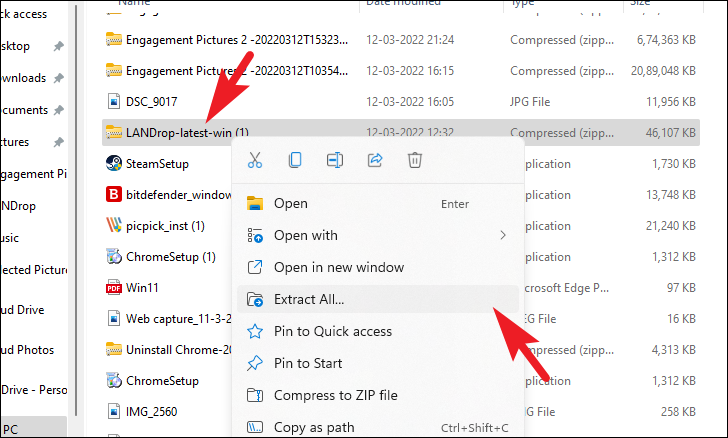
Step 3: Open the extracted folder and double-click on the 'LANDrop' application to run it. Since it's a portable app, there's no installation required.

Step 4: On your iPhone, go to the App Store and search for 'LANDrop'. Download and install the LANDrop app.

Step 5: Launch the LANDrop app on your iPhone. When prompted, tap 'OK' to allow the app to find and connect to devices on your local network.

Step 6: In the LANDrop app, tap the image icon in the top-right corner to access your photo library. Select the photos you want to transfer and tap 'Add'.
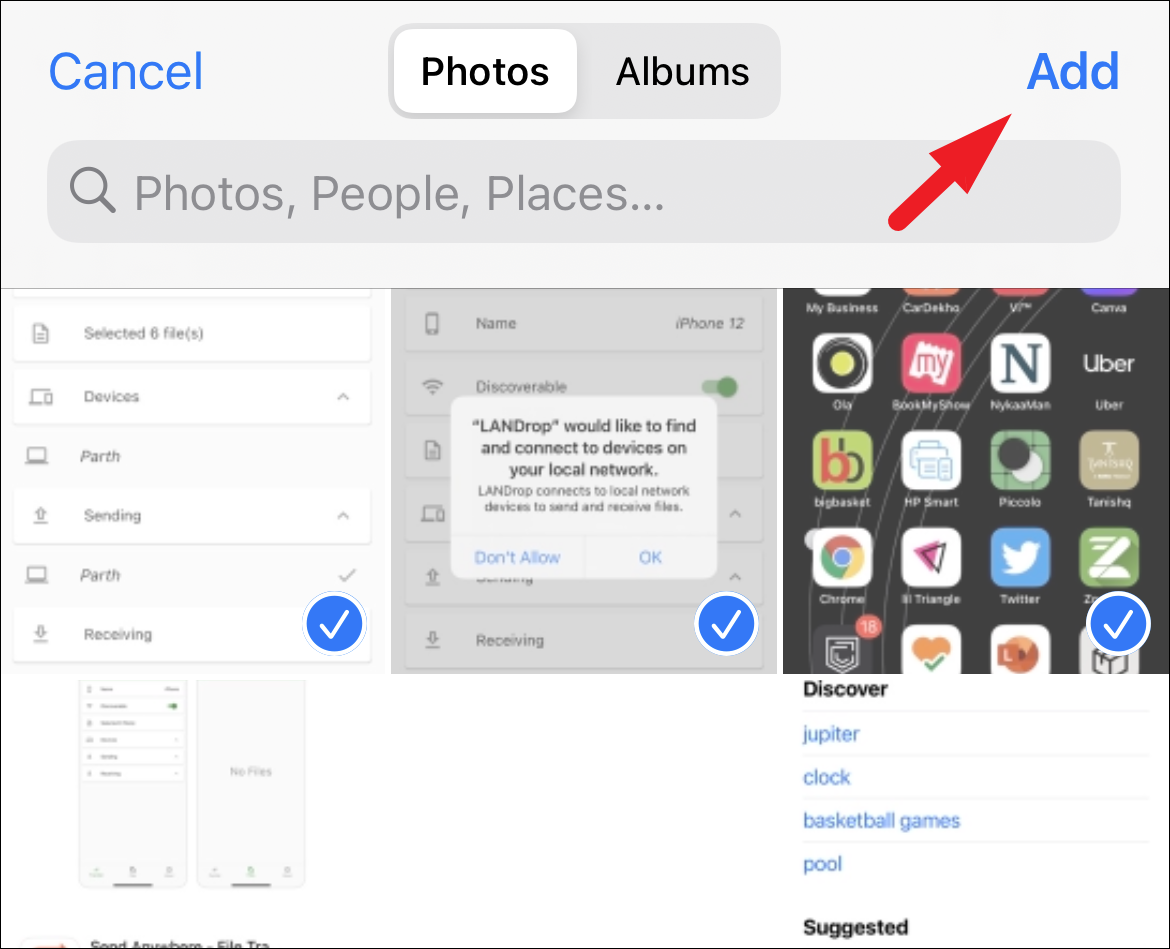
Step 7: Tap on the 'Devices' tab to see available devices. If your PC doesn't appear, ensure both devices are on the same Wi-Fi network and restart the app if necessary. Tap on your PC's name to initiate the transfer.
Step 8: On your PC, a prompt will appear from LANDrop asking if you want to receive the files. Click 'OK' to accept the transfer.
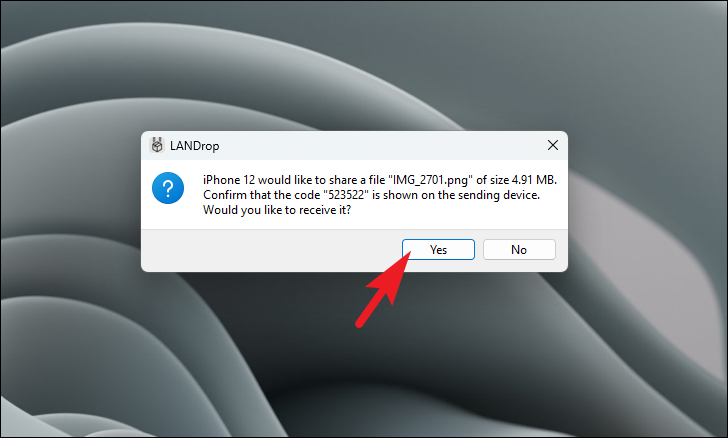
Step 9: Once the transfer is complete, the received photos will be available in your PC's default download folder. LANDrop will open the folder automatically for your convenience.
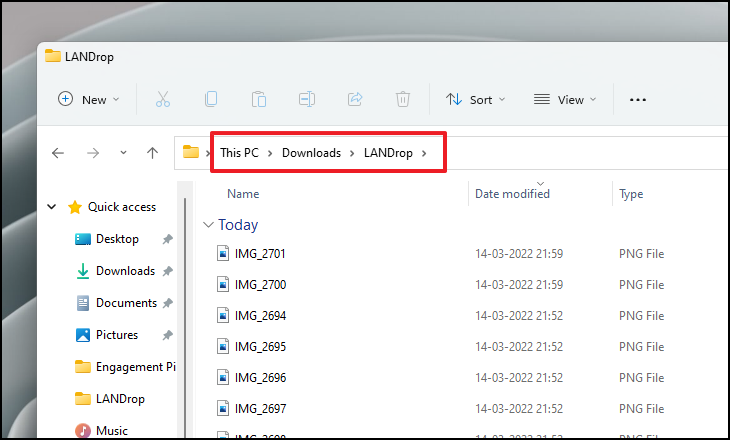
Using LANDrop provides a fast and wireless method to transfer photos without needing cables or cloud services.
3. Transfer Photos Using Cloud Storage
Cloud storage services like Google Drive offer an easy way to transfer photos from your iPhone to your PC, especially when dealing with smaller batches of images or when a physical connection isn't possible.
Upload Photos to Google Drive from iPhone
Step 1: On your iPhone, open the App Store and search for 'Google Drive'. Download and install the app if you haven't already.
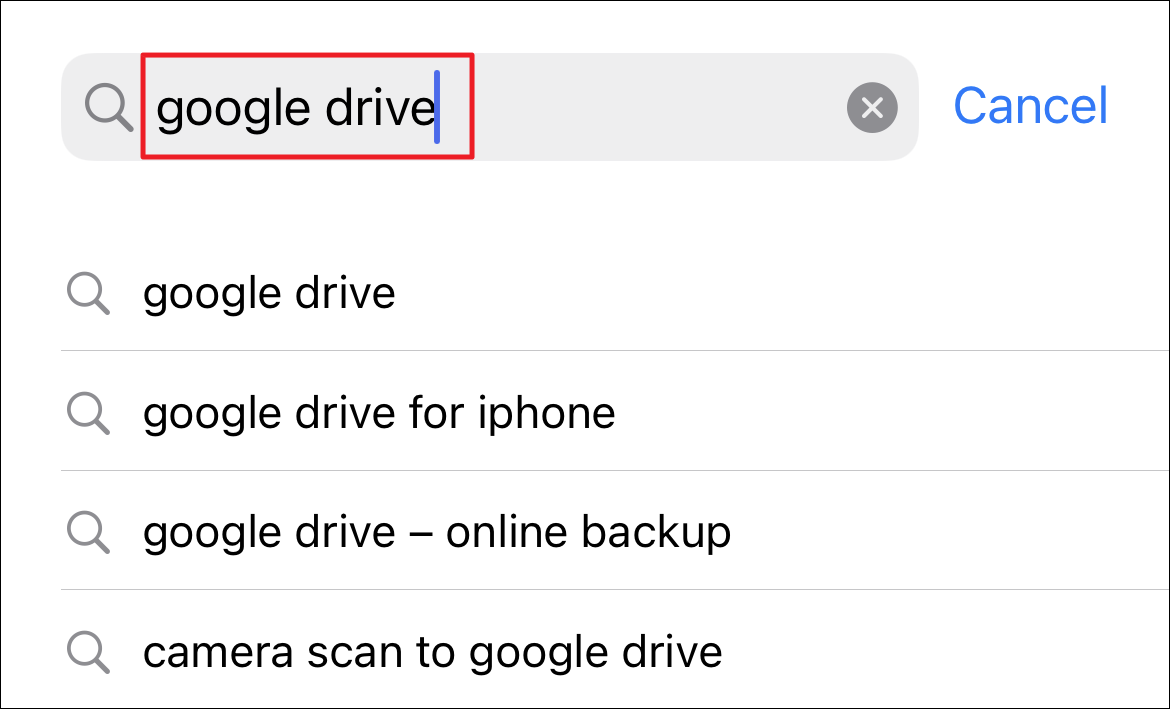
Step 2: Launch the Google Drive app and sign in with your Google account credentials.

Step 3: In the app, tap the '+' button located at the bottom-right corner and select 'Upload' from the menu.

Step 4: Choose 'Photos and Videos' from the options. If prompted, allow the app access to your photo library.
Step 5: Navigate to the album containing the photos you wish to upload. Tap on the images to select them, then tap 'Upload' at the top-right corner.

Download Photos from Google Drive to PC
Step 6: On your PC, open a web browser and go to drive.google.com. Sign in with the same Google account used on your iPhone.
Step 7: Locate the uploaded photos or folder in your Drive. Click to select the files or folder you want to download.
Step 8: Right-click on the selected items and choose 'Download' from the context menu. The files will be compressed into a ZIP folder and downloaded to your PC's default download location.

This method is convenient if you already use cloud services and want to access your photos from any device.
4. Transfer Photos Using the Photos App
The Windows Photos app provides a straightforward way to import photos from your iPhone to your PC.
Step 1: Connect your iPhone to your PC with a USB cable. On your iPhone, you may need to tap 'Allow' to give your PC access to your photos.
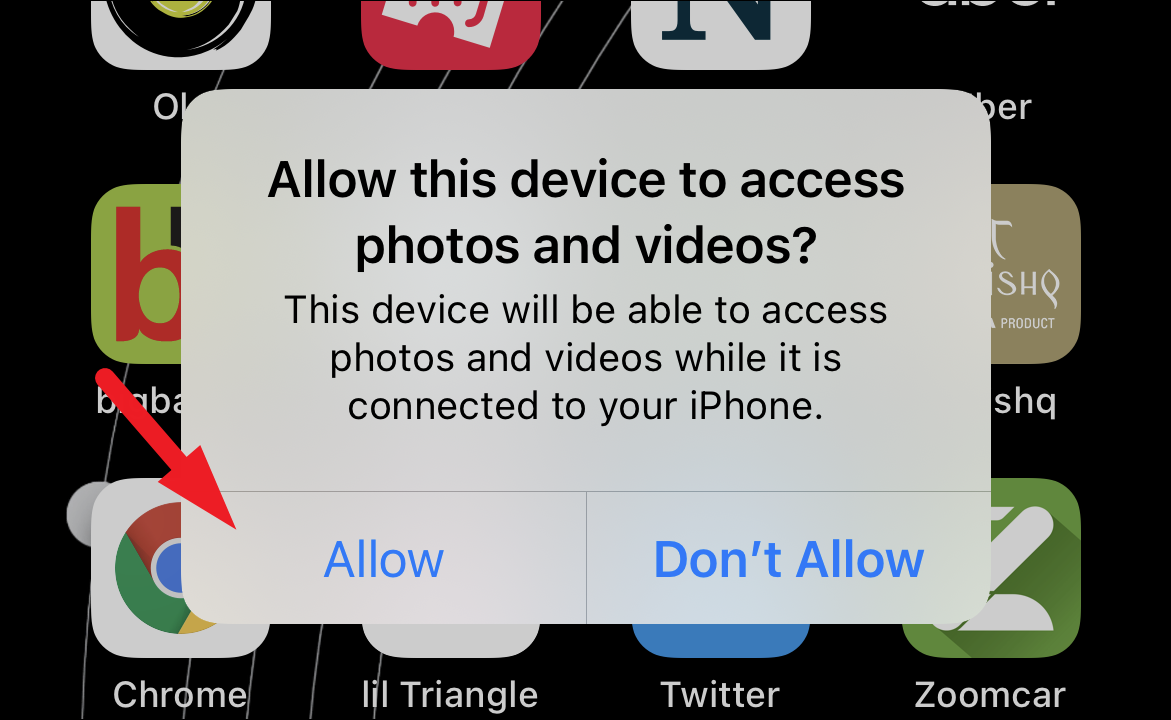
Step 2: On your PC, open the 'Photos' app by searching for it in the Start menu.
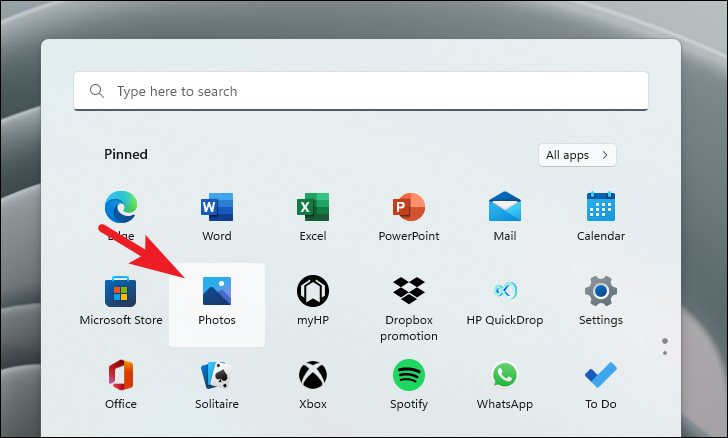
Step 3: In the Photos app, click on the 'Import' button located at the top-right corner and select 'From a connected device'.
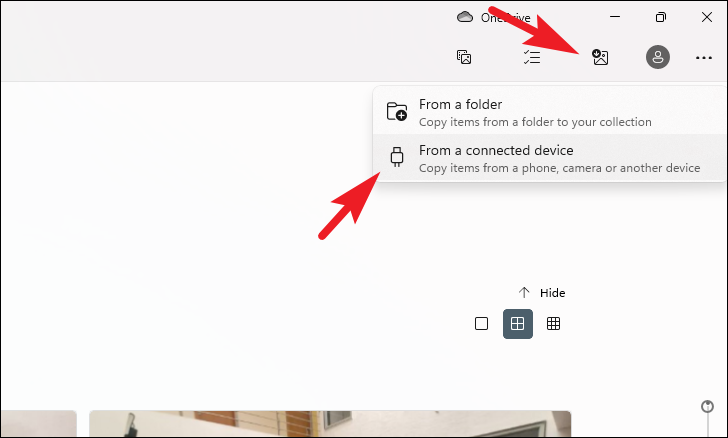
Step 4: The app will search for photos on your iPhone. After scanning, it will display the available media.
Step 5: Choose the photos you want to import. You can select 'All items' or 'Items since last import' from the drop-down menu next to 'Select'.
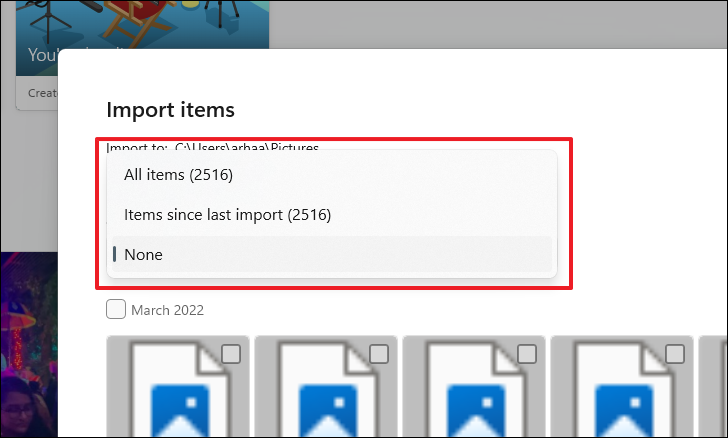
Step 6: To change the import destination, click on 'Change destination' and select your preferred folder.
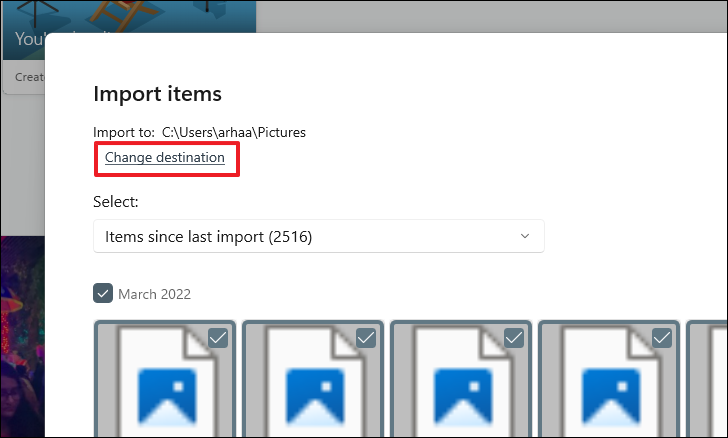
Step 7: If you want to delete the photos from your iPhone after importing, check the box next to 'Delete original items after import'. Click on 'Import' to start transferring the photos.

The Photos app provides a user-friendly interface to manage and import your photos effortlessly.
5. Use iCloud for Windows
If you prefer a cloud-based solution integrated with Apple's ecosystem, using iCloud for Windows allows you to access your iPhone photos on your PC.
Step 1: On your iPhone, ensure that iCloud Photos is enabled. Go to 'Settings' > tap on your name > 'iCloud' > 'Photos', and toggle on 'iCloud Photos'.
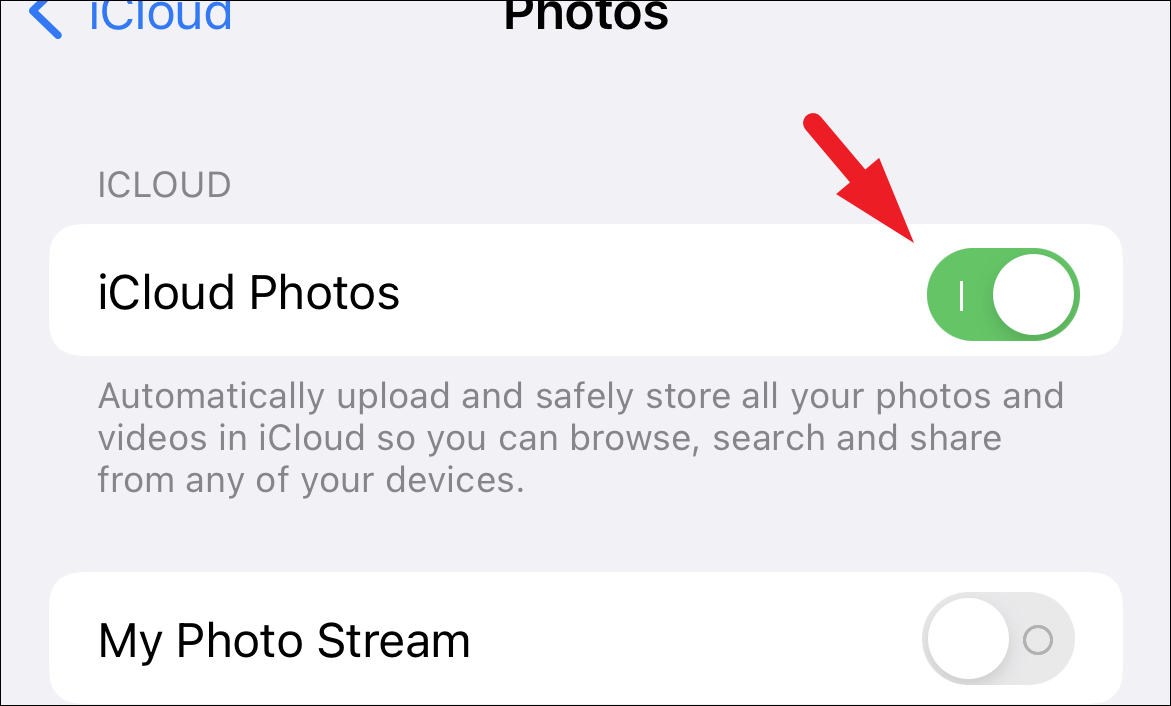
Step 2: On your PC, open the Microsoft Store from the Start menu and search for 'iCloud'. Download and install the iCloud for Windows app.

Step 3: Launch the iCloud app and sign in with your Apple ID. When prompted, select the features and content you want to sync across your devices. Ensure that 'Photos' is checked.

Step 4: Click on 'Apply' to save your settings. iCloud will create a folder called 'iCloud Photos' in File Explorer.
Step 5: Open 'File Explorer' and click on 'iCloud Photos' from the left sidebar. Here, you can view your synced photos.
Step 6: To download your photos, click on 'Download photos and videos' in the iCloud Photos folder. Select the photos you want to download and click 'Download'.

Using iCloud for Windows keeps your photos up to date across all your devices within the Apple ecosystem.
By utilizing these methods, you can efficiently transfer photos from your iPhone to your Windows PC, ensuring your memories are safely stored and easily accessible.

